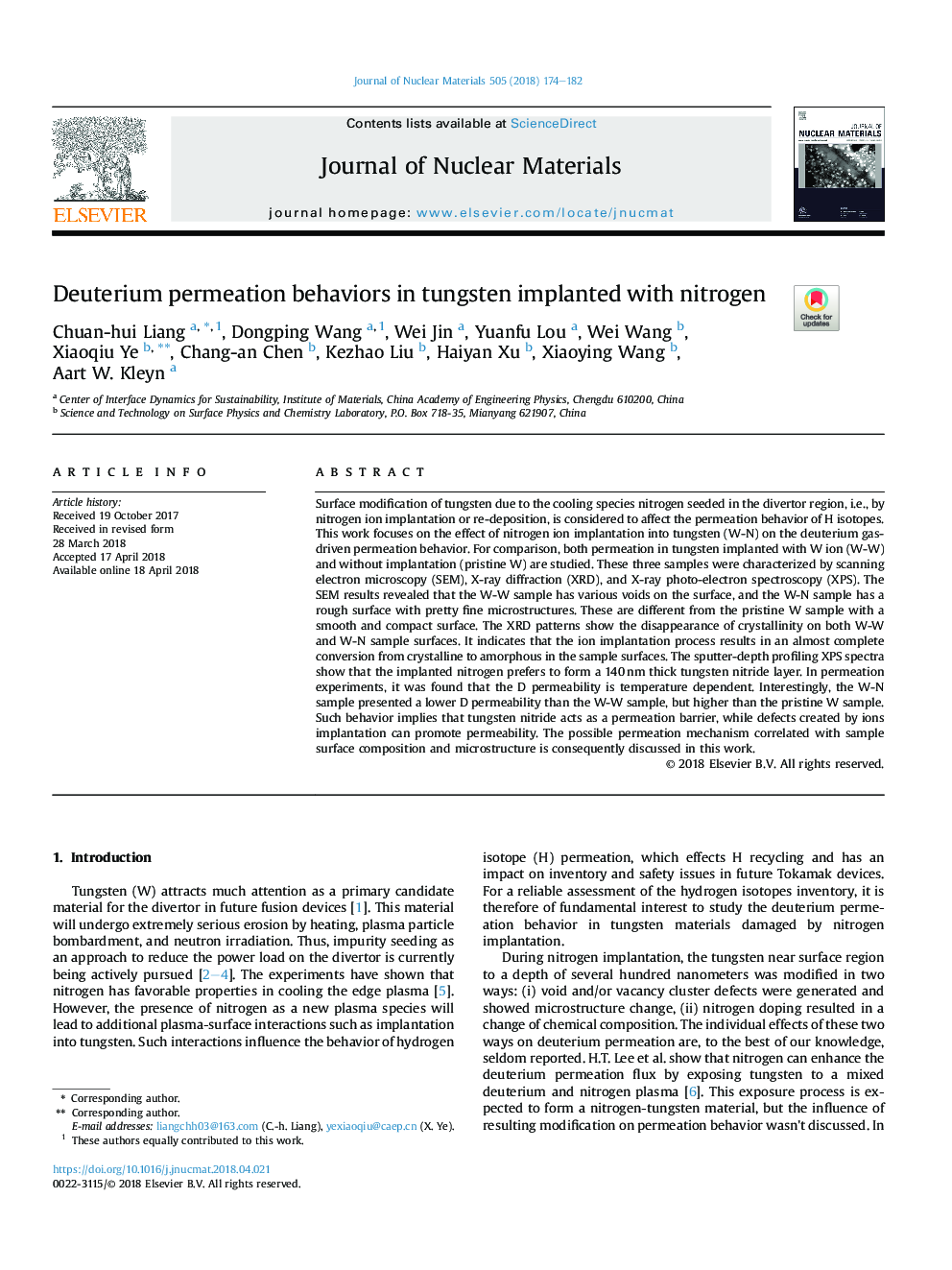| Article ID | Journal | Published Year | Pages | File Type |
|---|---|---|---|---|
| 7963205 | Journal of Nuclear Materials | 2018 | 9 Pages |
Abstract
Surface modification of tungsten due to the cooling species nitrogen seeded in the divertor region, i.e., by nitrogen ion implantation or re-deposition, is considered to affect the permeation behavior of H isotopes. This work focuses on the effect of nitrogen ion implantation into tungsten (W-N) on the deuterium gas-driven permeation behavior. For comparison, both permeation in tungsten implanted with W ion (W-W) and without implantation (pristine W) are studied. These three samples were characterized by scanning electron microscopy (SEM), X-ray diffraction (XRD), and X-ray photo-electron spectroscopy (XPS). The SEM results revealed that the W-W sample has various voids on the surface, and the W-N sample has a rough surface with pretty fine microstructures. These are different from the pristine W sample with a smooth and compact surface. The XRD patterns show the disappearance of crystallinity on both W-W and W-N sample surfaces. It indicates that the ion implantation process results in an almost complete conversion from crystalline to amorphous in the sample surfaces. The sputter-depth profiling XPS spectra show that the implanted nitrogen prefers to form a 140â¯nm thick tungsten nitride layer. In permeation experiments, it was found that the D permeability is temperature dependent. Interestingly, the W-N sample presented a lower D permeability than the W-W sample, but higher than the pristine W sample. Such behavior implies that tungsten nitride acts as a permeation barrier, while defects created by ions implantation can promote permeability. The possible permeation mechanism correlated with sample surface composition and microstructure is consequently discussed in this work.
Related Topics
Physical Sciences and Engineering
Energy
Nuclear Energy and Engineering
Authors
Chuan-hui Liang, Dongping Wang, Wei Jin, Yuanfu Lou, Wei Wang, Xiaoqiu Ye, Chang-an Chen, Kezhao Liu, Haiyan Xu, Xiaoying Wang, Aart W. Kleyn,
